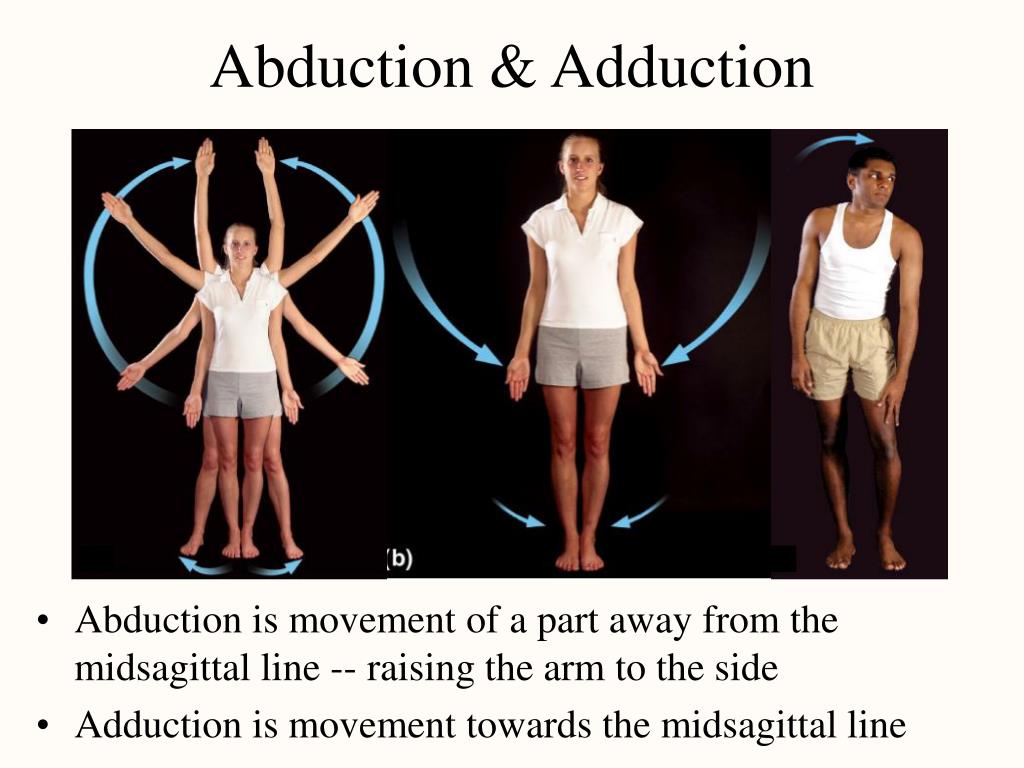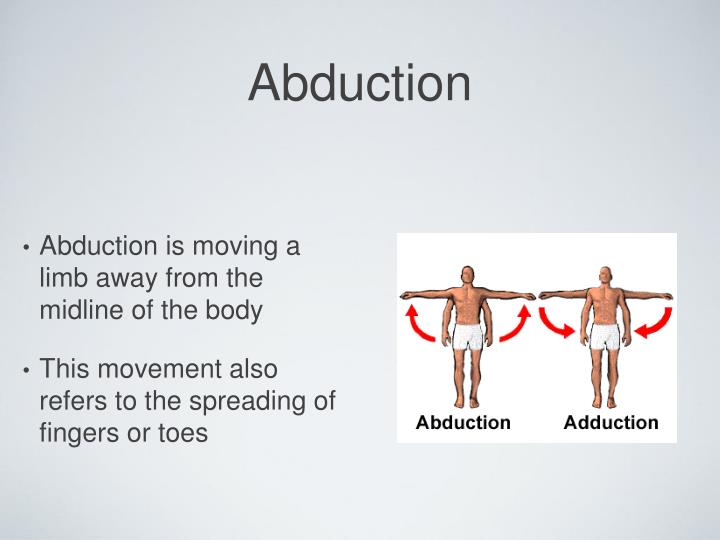

For example, abduction of the shoulder raises the arms out to the sides of the body.Īdduction is a movement towards the midline. Fig 1 - Flexion and extension.Ībduction and adduction are two terms that are used to describe movements towards or away from the midline of the body.Ībduction is a movement away from the midline - just as abducting someone is to take them away. Extension of the knee straightens the lower limb. Extension at the elbow is increasing the angle between the ulna and the humerus. When the knee flexes, the ankle moves closer to the buttock, and the angle between the femur and tibia gets smaller.Įxtension refers to a movement that increases the angle between two body parts. Flexion at the elbow is decreasing the angle between the ulna and the humerus. They refer to increasing and decreasing the angle between two body parts:įlexion refers to a movement that decreases the angle between two body parts. We have described the terms in antagonistic pairs for ease of understanding.įlexion and extension are movements that occur in the sagittal plane.

Most movements have an opposite movement - also known as an antagonistic movement.

The terms used assume that the body begins in the anatomical position. Muscles contract to produce movement at joints, and the subsequent movements can be precisely described using this terminology. (2015) “Business Research Methods” 4 th edition, Oxford University Press, p.Anatomical terms of movement are used to describe the actions of muscles upon the skeleton. (2012) “Research Methods for Business Students” 6 th edition, Pearson Education Limited Important elements of dissertations such as research philosophy, research design, methods of data collection, data analysis and sampling are explained in this e-book in simple words. The e-book also explains all stages of the research process starting from the selection of the research area to writing personal reflection. My e-book, The Ultimate Guide to Writing a Dissertation in Business Studies: a step by step assistance contains discussions of theory and application of research approaches. In the course of explaining ‘surprising facts’ or ‘puzzles’, the researcher can combine both, numerical and cognitive reasoning.ĭespite its increasing popularity in business studies, application of abductive reasoning in practice is challenging and you are advised to stick with traditional deductive or inductive approaches when writing your dissertation if it is the first time you are writing a dissertation… When following an abductive approach, researcher seeks to choose the ‘best’ explanation among many alternative in order to explain ‘surprising facts’ or ‘puzzles’ identified at the start of the research process. ‘Surprising facts’ or ‘puzzles’ may emerge when a researchers encounters with an empirical phenomena that cannot be explained by the existing range of theories. In abductive approach, the research process starts with ‘surprising facts’ or ‘puzzles’ and the research process is devoted their explanation.

The figure below illustrates the main differences between abductive, deductive and inductive reasoning:Īt the same time, it has to be clarified that abductive reasoning is similar to deductive and inductive approaches in a way that it is applied to make logical inferences and construct theories. Abductive reasoning, as a third alternative, overcomes these weaknesses via adopting a pragmatist perspective. Inductive reasoning, on other hand, criticized because “no amount of empirical data will necessarily enable theory-building”.
#Abduction definition how to
Specifically, deductive reasoning is criticized for the lack of clarity in terms of how to select theory to be tested via formulating hypotheses. Abductive reasoning, also referred to as abductive approach is set to address weaknesses associated with deductive and inductive approaches.


 0 kommentar(er)
0 kommentar(er)
